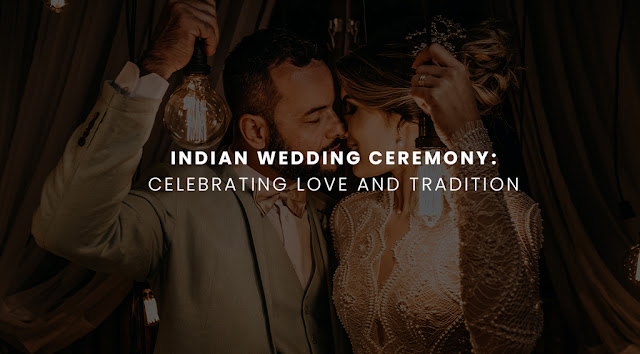Hindu Wedding Ceremony Traditions: A Guide to the Sacred Rituals and Customs
Weddings are the most special events in our lives, and every culture celebrates them in its unique way. Hindu weddings are one of the most vibrant and colorful weddings in the world, filled with ancient traditions and rituals that have been followed for centuries.
If you're planning to attend or participate in a Wedding Tradition, you might be wondering what to expect. Hindu weddings are full of beautiful traditions and rituals that have been passed down through generations.
15 Hindu wedding ceremony traditions
In this article, we will explore the 15 Hindu wedding ceremony traditions that make a Hindu wedding a truly unforgettable experience.
Haldi Ceremony:
The Haldi ceremony is one of the most important pre-wedding rituals in Hindu weddings. In this ceremony, a paste of turmeric, sandalwood, and other ingredients is applied to the bride and groom's face and body to give them a glowing and radiant complexion.
It is believed that the Haldi ceremony brings good luck and wards off evil spirits.
Mehendi Ceremony:
The Mehendi ceremony is another pre-wedding ritual that is celebrated with great enthusiasm in Hindu weddings. In this ceremony, the bride's hands and feet are adorned with intricate and beautiful henna designs. Mehendi is believed to have cooling properties and is considered to be auspicious for the bride.
Engagement Ceremony:
The engagement ceremony is the formal announcement of the wedding and is usually held a few months before the wedding date. In this ceremony, the bride and groom exchange rings in the presence of their families and friends. It is also an occasion for both families to meet and get to know each other.
Ganesh Puja:
The Ganesh Puja is a ritual that is performed before the start of any important ceremony in Hinduism. In this ritual, Lord Ganesh, the remover of obstacles, is worshipped to seek his blessings for a smooth and Strengthen marriage.
Baraat:
The Baraat is the groom's procession that arrives at the wedding venue with much fanfare and celebration. The groom usually rides a decorated horse or elephant, accompanied by his family and friends dancing to the beats of the dhol.
Kanyadaan:
The Kanyadaan is the most emotional moment of a Hindu wedding, where the bride's father gives away his daughter's hand in marriage to the groom. It is a symbolic gesture of entrusting the groom with the responsibility of taking care of his daughter.
Saat Phere:
The Saat Phere or the seven vows are the most important part of a Hindu wedding ceremony. In this ritual, the bride and groom take seven vows around the sacred fire, symbolizing their commitment and promise to each other for a Happy Marriage. Each vow has a special meaning and significance, such as promising to love and respect each other, to support each other in good and bad times, and to be loyal and faithful to each other.
Sindoor and Mangalsutra:
The Sindoor and Mangalsutra are the symbols of a married woman in Hinduism. In this ritual, the groom applies sindoor or vermillion powder on the bride's forehead, symbolizing her marital status. The mangal sutra is a sacred necklace that is tied around the bride's neck by the groom, symbolizing their eternal bond and commitment.
Vidaai:
The Vidaai is the moment when the bride bids farewell to her family and leaves for her new home with her husband. It is an emotional moment for the bride and her family, as she leaves behind her childhood and enters a new phase of her life.
Griha Pravesh:
The Griha Pravesh is the ritual of welcoming the bride to her new home. In this ritual, the bride is welcomed by her mother-in-law with aarti and a traditional welcome ceremony.
Reception:
The reception is the post-wedding celebration that is usually held a day or two after the wedding. It












Comments
Post a Comment